Anesthesia For Facelift Surgery – Plastic Surgeons Opinions
A facelift can be performed under 2 different types of anesthesia.
1) General anesthesia you are entirely out. You will initially go to sleep and then wake up and the procedure is over.
2) Local with oral sedation is another type of anesthetic. With this the areas of your face are kept numb and you are given oral medications to make you feel very relaxed.
Both types of anesthesia are very safe. Its all about patient preference, a patients age, and the patients past medical history. (Timothy Treece, MD, FACS, Columbus Plastic Surgeon)
Facelift can be done safely with both anesthesia types
Facelift surgery can be performed equally safe under a general anesthetic or local anesthesia with sedation. An important factor to consider is that the procedure be performed in an accredited facility. Advantages to local anesthesia with sedation is that it usually costs less, and doesn’t require intubation.

Anesthesia Safe Option For Facelift
General anesthesia is preferred
Facelifts can be performed under either a local with sedation or general anesthetic. It is our preference to perform facelifts under general anesthesia for the three-hour duration of the procedure. We employ a board-certified physician/anesthesiologists to monitor the anesthetic, heart rate, blood pressure, and oxygen concentration during general anesthesia, making it safer than sedation.
In preparing patients for a facelift, local anesthetic is injected into areas of the face and neck to prevent bleeding. These injections could be felt if the facelift were done under I.V. sedation, however the patient experiences no discomfort if general anesthesia is chosen.
Sometimes it is difficult to comfortably sedate a patient without sedating them too much, which then would require converting over to a general anesthetic. For this reason, we perform all of our facelifts and neck lifts under general anesthesia. (William Portuese, MD, Seattle Facial Plastic Surgeon)

Anesthesia Used For Facelift Rhytidectomy
In general facelifts performed under local anesthesia with sedation are more “limited” in their approach and what they can achieve as well as their longevity and how long they “last.” Sometimes they can be referred to as minimal-incision or mini-facelifts or “limited” facelifts.
They also typically are more inexpensive procedures for patients, and can be a reasonable option in some patients that may be looking for some improvement but cannot afford a “full” comprehensive facelift. In younger patients and patients with early signs of facial aging that may not be looking for a full facelift and may not need a “full” facelift this may be a good option.
Also there are some potential complications of surgery that can be averted such as DVT (deep venous thrombosis) by not being completely asleep with general anesthesia.
Most doctors will treat the loose skin and superficial fat with these procedures that can be done under local, however “deeper” facelifts that require more work on the SMAS (deep layer of the face) may be better served with a “full” facelift under general anesthesia.
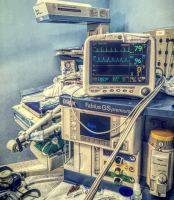
Anesthesia Used For Facelift Surgery
Medical clearance is important in my opinion on all patients seeking facial rejevenation. It is also of paramount importance to choose a board certified plastic surgeon or facial plastic surgeon that has been properly trained to do the surgical procedure.
Also, the accreditation of the surgicenter or hospital is very important. (James F. Boynton, MD, FACS, Houston Plastic Surgeon)
“Its always best to keep the personality of the patient out of the OR”. These are the words of a great plastic surgeon & teacher. I for one would prefer general anaesthesia for facial rejuvenation surgery, considering aspects of patient & surgeon comfort. (Sameer Karkhanis, MS, DNB, India Plastic Surgeon)
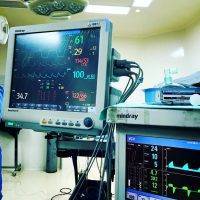
General Anesthetic Or Intravenous Sedation
The procedure may be done under IV sedation (“twilight” anesthesia) or general anesthesia. The procedure is typically performed on an outpatient basis, with patients going home the same day. Patient personal preferences as well as patient’s general medical health are considerations.(Anand G. Shah, MD, San Antonio Facial Plastic Surgeon)
I have done nearly a thousand of these cases now under general anesthesia, local with IV sedation, and local with oral sedation.
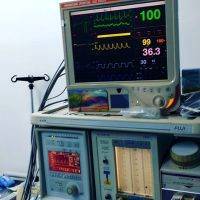
IV Sedation Moderate
More bleeding means more bruising and swelling and therefore more recovery. I always strive to make my procedures better for the patient and general anesthesia, at least in my hands is not as optimal as I would like.
I have gained a lot of experience over the past several years with facelift under local anesthesia and oral sedation. I would not have thought this possible many years ago, but the vast majority of patients do very well with this.
The major refinements have come in the oral sedation and local anesthetic solution I use. There simply is less bleeding and swelling, and very little nausea after surgery. My personal preference however, is to do the procedure under local with IV sedation, as this is a compromise that represents the best of both worlds. (Ben Lee, MD, Denver Plastic Surgeon)
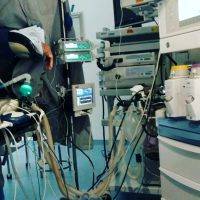
Minimal Sedation
Anaesthesia during facelift
Some of the less invasive techniques are certainly amenable to local anaesthesia, rather than general. However, unfortunately, these decisions are often made in the interests of the surgeon or the clinic performing the procedure, rather than the patient.
For a full facelift, the gold standard technique is, in my opinion, to use ‘total intravenous anaesthesia’. This involves an anaestheisadministering the anaesthetic and monitoring the patient closely throughout the procedure, something that is often sadly lacking in surgeon administered sedation.
I would be wary of any surgical clinic who is unable to offer a full anaesthetic services as part of their practice. (James Murphy, FRCS(Plast), Manchester Plastic Surgeon)
A face lift can be safely performed under oral sedation with local anesthesia only, or it can be performed in an outpatient surgical facility with conscious sedation or general anesthesia. All of my patients obtain a letter of medical clearance and some basic labs to ensure a further layer of safety with any surgical procedure that I perform. (Parker A. Velargo, MD, New Orleans Facial Plastic Surgeon)
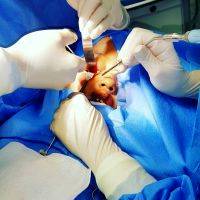
PLASTIC SURGERY UNDER LOCAL AND TWILIGHT ANESTHESIA WITHOUT GENERAL ANESTHESIA
Surgeons vary in their preferences. It is common to use general anesthesia, or sedation and local anesthetic to perform a facelift procedure. In my practice I use general anesthesia for facelift surgeries. The operation is performed in an outpatient surgery center and the anesthesia is performed by board-certified anesthesiologists. (Austin Hayes, MD, Portland Plastic Surgeon)
General anesthesia is common
Usually, general anesthesia is common for a facelift. However, mini lifts may only require local, depending on the patient. (Jerome Edelstein, MD, Toronto Plastic Surgeon)
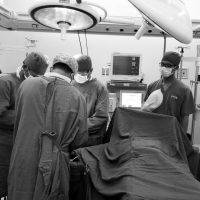
The Level Of Sedation Is Much Less Than A General Anesthesia
It is very common to perform a facelift with local under sedation. My patients find that their recovery is faster and more comfortable as well. (Michael Constantin Gartner, DO, Paramus Plastic Surgeon)
I perform my facelifts under sedation or “twilight” anesthesia
Since a facelift is not an incredibly painful procedure, I opt to perform most facelifts under IV sedation (“twilight anesthesia”). Using this type of anesthesia, you will be monitored by a board certified anesthesiologist and will not remember much of the procedure itself.
I prefer this method because it is safer and completely sufficient to provide adequate pain relief during the procedure. I suggest you meet with a Board Certified plastic surgeon to discuss your anesthesia options with you. (David P. Rapaport, MD, FACS, Manhattan Plastic Surgeon)
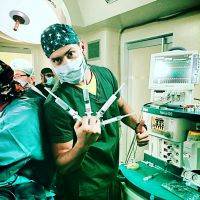
Types Of Anesthesia Used In Face Cosmetic Surgery
By and large, the great majority of plastic surgeries are performed as outpatient procedures in this fashion. We have recently published our experience with 2,500 consecutive outpatient procedures under TIVA (total intravenous anesthesia) with no anesthetic complications or hospitalizations and a 1% incidence of nausea and with an average of 45 minutes in the recovery room before discharge.
Because general anesthesia has been so safe and effective for us, I tend to prefer performing surgery with my patients asleep to make sure they are comfortable and the surgery is performed under very controlled circumstances. (Kevin L. Smith, MD, FACS, Charlotte Plastic Surgeon)
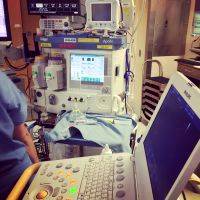
What A General Anesthetic
A facelift can be done safely under coal anesthesia, but it’s nit for everyone. (Ronald J. Edelson, MD, San Diego Plastic Surgeon)
The extend of your facelift, your anxiety level and your health all play a role in determining the amount of anesthesia that is best for you. I perform facelift surgery frequently with only local anesthetic, but frequently general anesthetic is the best option as well.
Each situation is different, but safety and achieving the best possible result are always the primary goals. (John K. Wakelin III, MD, FACS, Columbus Plastic Surgeon)
Not really sure why anyone would want to be awake, or in and out, while lifting a face. (Scott Loessin, MD, Key West Plastic Surgeon)
The type of anesthesia will be selected with both you and the doctors. I always feel it is important to have an anesthesiologist and in rather case you need to be comfortable and sleep rather with sedation and local anesthesia or with intubation. (Alejandro J. Quiroz, MD, FACS, Mexico Plastic Surgeon)
The anesthesia used for facelifts does depend on the kind of facelift and the surgeons preference.
Some surgeons will even do facelifts in their offices under local anesthesia with or without some oral sedation. I prefer a light general anesthesia for the facelifts I perform in an accredited outpatient surgical facility.
Patient safety should take precedence and a board certified anesthesiologist is essential for a safe anesthesia. Minimizing blood pressure changes reduces the risk of hematoma and bleeding and the patient has less bruising and swelling.
Patient comfort and safety should always come first. (Michelle J. Place, MD, Danville Plastic Surgeon)
Twilight sedation for facelift can be performed very comfortably for most patients. If however you have a history of anxiety, regularly take medications for anxiety, or get nervous at the very thought of your procedure, deeper anesthesia may be a better choice.
Discuss your concerns with your surgeon and make certain you are both comfortable with the plan!. (Roy A. David, MD, San Diego Facial Plastic Surgeon)
Both General and Sedation anesthesia are possible with a facelift
General anesthesia is perfectly safe as is sedation. Both are acceptable and each surgeon has their own preference. As both are accepted and make you comfortable and unaware of any pain, I recommend you choose the method that your surgeon is more comfortable with as you want him/her do what they do best under the anesthesia setting that they are most familiar with. (Martin Jugenburg, MD, Toronto Plastic Surgeon)
